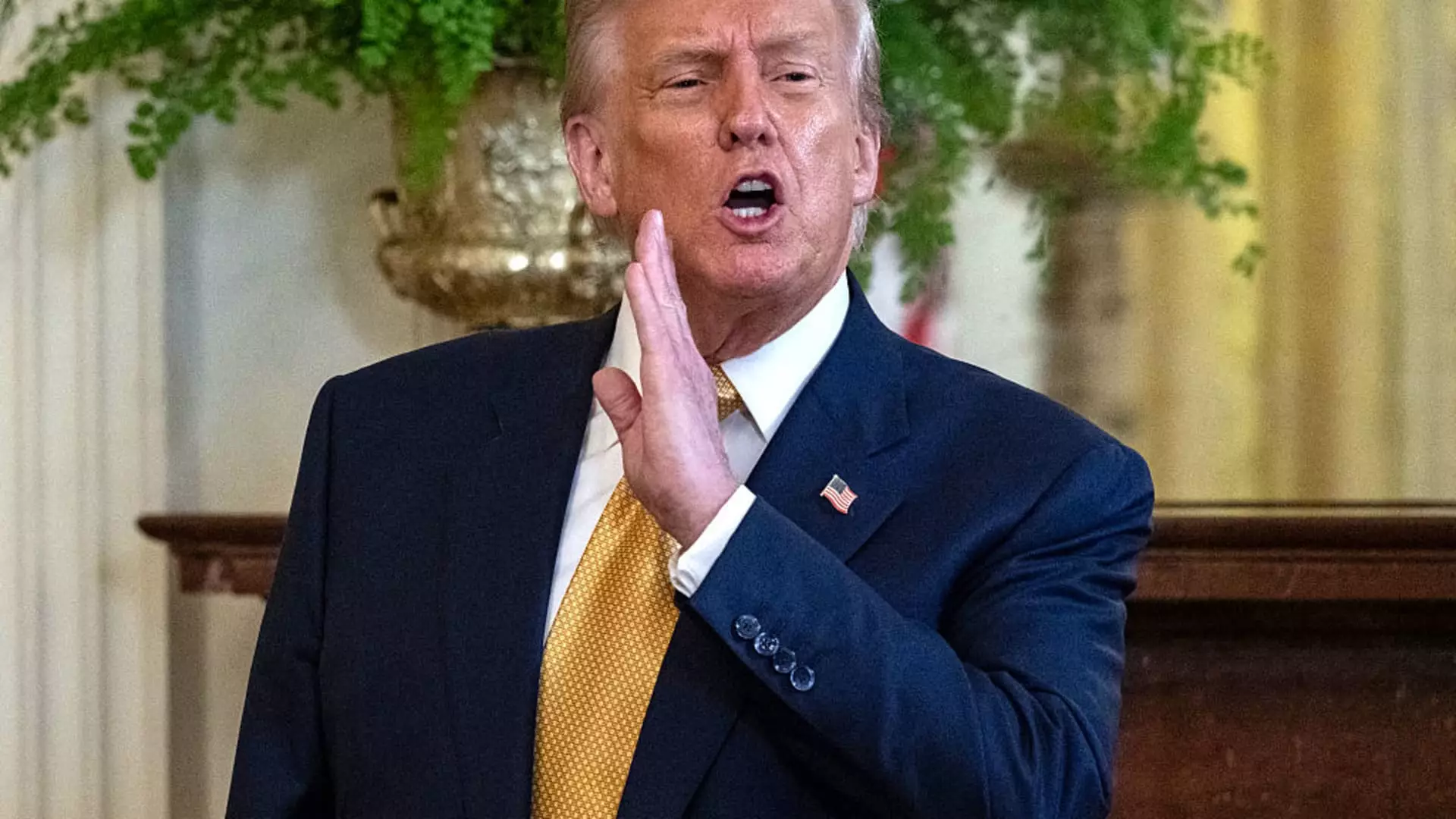In an era where economic diplomacy often resembles a high-stakes poker game, the recent move by the Trump administration to forge ahead with trade talks with the European Union underscores a shift toward unilateralism and strategic brinkmanship. While the White House emphasizes negotiations aimed at mutual benefits, the reality is far more complex. The looming threat of tariffs—set to impose a 30% levy on EU imports—acts as both a bargaining chip and a source of instability. Such aggressive tactics reveal a fundamental prioritization of short-term political gains over the long-term stability of transatlantic economic relations.
Critically, this approach undermines foundational principles of diplomatic collaboration. The EU, a key economic partner with an extensive industrial base, finds itself in a difficult position: conceding on tariffs or facing retaliatory measures that could harm businesses and consumers on both sides. The European response, seeking negotiated outcomes rather than escalating trade wars, indicates a desire to preserve economic stability. However, the failure to specify concrete proposals from the US signals a fragile negotiation process that risks collapsing into a damaging confrontation.
What underscores this uncertainty is the visible departure from collaborative trade policy toward aggressive tactics that seemingly prioritize protectionism. It exposes a worldview where economic leverage is wielded as a political weapon, rather than a tool for fostering mutual growth. This approach, while perhaps appealing to protectionist politicians in the short term, threatens to deepen divisions and destabilize the carefully balanced international trade system.
Japan’s Deal and Its Ripple Effects
The recent U.S.-Japan trade agreement offers a glimpse into a more strategic direction—one that could influence negotiations with Europe. The deal’s focus on reducing auto tariffs from 25% to 15% signals an openness to sector-specific negotiations, a concept the EU has long championed. Yet this move, while seemingly positive, raises questions about the broader implications of such agreements. Can existing models of trade liberalization serve as the blueprint for future European negotiations with the U.S.?
Experts have pointed out that the absence of cap restrictions on auto exports from Japan could set a precedent. If the U.S. manages to secure concessions in agriculture or manufacturing sectors without significant compromises, the EU faces the difficult choice of whether to accept lower tariffs for sector-specific exemptions or to push back for broader protections. This balancing act demonstrates the ongoing tension between free trade principles and strategic economic interests.
The markets’ warm reception to the Japan deal—reflected in a boost for auto stocks and the stock index—suggests investor optimism. However, this does not paint the complete picture. Market confidence often depends on perceived stability and predictability, which remain elusive amid ongoing tariff threats and political maneuvering. A cautious but optimistic outlook must be tempered by the realization that trade negotiations remain volatile, and the geopolitical landscape is shifting with unpredictable volatility.
Europe’s Strategic Navigation Amid Global Tensions
While the U.S. and Japan negotiate their deals, European leaders are engaging in their diplomatic efforts—Ursula von der Leyen and Antonio Costa traveling to Asia for high-level meetings. These moves underline Europe’s recognition that global commerce is increasingly interconnected and competitive. The EU’s ambitions in Asia, especially regarding China, are complicated by the protectionist policies emanating from Washington, which now threaten to fracture the global trade fabric further.
The EU’s cautious diplomacy is driven by the understanding that diminished cooperation and heightened tariffs could weaken the bloc’s strategic positioning. Yet, there is also an acknowledgment that Europe cannot rely solely on transatlantic alliances; it must diversify and strengthen its economic engagements in Asia and beyond. Still, the overarching lesson remains clear: aggressive, protectionist policies threaten to undo years of careful integration and cooperation.
Critical thinkers would argue that this trade turmoil exposes the contradictions within a liberal economic order that champions free trade but often succumbs to nationalist pressures. Europe’s attempt to navigate this treacherous terrain reflects a pragmatic center-ground stance—balancing openness with strategic defensiveness. It recognizes that economic diplomacy requires patience, respect, and the willingness to engage in tough negotiations without resorting to the blunt instrument of tariffs. Only through a balanced approach can the EU hope to safeguard its interests while fostering a more cooperative global trade environment.
The future of international trade depends on whether superpower diplomacy will prioritize collaboration or succumb to protectionism’s seductive allure. Europe’s cautious re-engagement in Asia and its ongoing negotiations with the U.S. suggest it leans toward the former—an essential stance for safeguarding global economic stability and reinforcing multilateral institutions that champion fair, rules-based trade.


Leave a Reply